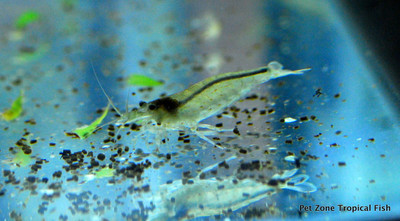Amano Shrimp: Nature's Cleanup Crew for Your Aquarium
Posted by Max Gandara on on 7th May 2024
Amano Shrimp: Nature's Cleanup Crew for Your Aquarium
In the intricate ecosystem of a freshwater aquarium, maintaining balance and cleanliness is crucial for the health and well-being of its inhabitants. Among the unsung heroes in this delicate equilibrium is the Amano Shrimp (Caridina multidentata), a small yet mighty crustacean renowned for its exceptional algae-eating prowess and peaceful demeanor. Join us as we delve into the fascinating world of Amano Shrimp and discover why they are indispensable members of any aquatic community.
Natural Habitat and Origin
The Amano Shrimp, also known as the Yamato Shrimp or Japanese Algae-Eater Shrimp, hails from the freshwater rivers and streams of Japan. Named after the legendary aquarist Takashi Amano, these shrimp were initially popularized for their algae-eating habits and their ability to thrive in a variety of aquarium conditions. Their natural habitat consists of densely vegetated areas with slow to moderate water flow, providing ample opportunities to forage for food and seek refuge from predators.
Appearance and Behavior
Amano Shrimp boast a sleek and streamlined body adorned with translucent hues of gray, brown, and green, allowing them to blend seamlessly into their surroundings. Their slender appendages and delicate antennae aid in navigating their environment and detecting potential food sources. Unlike some other shrimp species, Amanos are relatively peaceful and exhibit minimal aggression towards tankmates, making them excellent additions to community aquariums.
Algae-Eating Superstars
One of the primary reasons aquarists adore Amano Shrimp is their voracious appetite for algae. These diligent crustaceans tirelessly scour aquarium surfaces, including glass, rocks, and plant leaves, to feast on unsightly algae growth. From green filamentous algae to stubborn diatoms and even hair algae, Amanos are renowned for their ability to keep aquariums pristine and algae-free without the use of chemicals or harsh cleaning methods.
Tank Requirements and Care
Creating a conducive environment for Amano Shrimp is relatively straightforward, making them suitable for aquarists of all experience levels. A well-established aquarium with ample hiding places, live plants, and smooth substrate provides the ideal setting for these industrious crustaceans. Water parameters should be kept stable, with temperatures ranging from 72°F to 78°F (22°C to 26°C), pH between 6.5 and 7.5, and moderate hardness.
Feeding and Diet
While Amano Shrimp primarily subsist on algae, it's essential to supplement their diet with additional sources of nutrition to ensure optimal health and vitality. They readily consume commercial sinking pellets, algae wafers, blanched vegetables such as zucchini and spinach, and occasional treats like bloodworms and brine shrimp. Providing a balanced diet ensures they receive essential nutrients and encourages natural foraging behaviors.
Breeding and Reproduction
Unlike some other freshwater shrimp species, breeding Amano Shrimp in captivity can be challenging due to their complex larval development stages. However, under ideal conditions, mature females may release larvae into the water column, where they undergo a series of molts before transitioning into miniature versions of their adult counterparts. While successful breeding is rare in home aquariums, witnessing the natural behaviors of Amano Shrimp can be a rewarding experience for dedicated aquarists.
Conclusion
In conclusion, Amano Shrimp are indispensable allies in the quest for a balanced and harmonious aquarium ecosystem. Their exceptional algae-eating abilities, peaceful demeanor, and ease of care make them invaluable additions to freshwater tanks of all sizes. Whether you're a novice aquarist seeking a natural solution for algae control or a seasoned enthusiast looking to enhance your aquatic landscape, Amano Shrimp are sure to impress with their efficiency and charm. Embrace these diligent crustaceans as nature's cleanup crew, and watch as they transform your aquarium into a thriving oasis of aquatic beauty.

